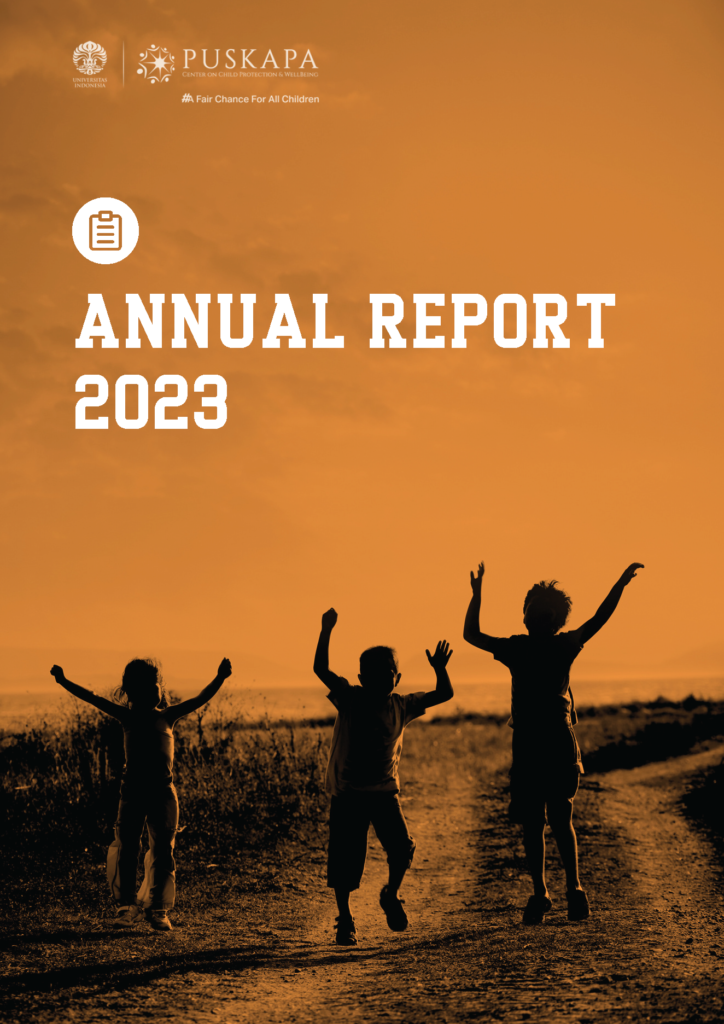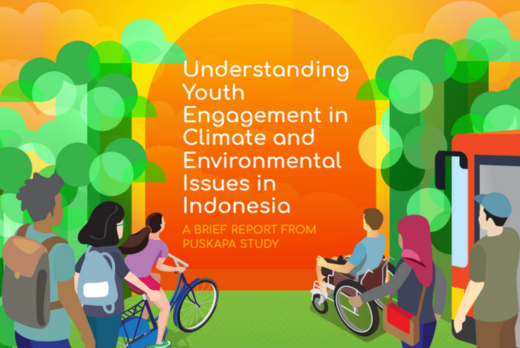A study on poverty in urban areas in Indonesia was conducted using the photovoice method, where child respondents were given a camera to photograph their daily lives over a period of 24 hours, and the results exceeded the researchers’ expectations. The pictures that the children took managed to give more insight into their lived experience on the research topic, compared to their responses when interviewed by the researchers.
One of the photographs depicted piles of trash in front of a house, as if revealing the child’s emotional reaction to the lack of proper waste disposal in their neighborhood. Other images showed children playing nearby an electric substation, and along the riverbanks, portraying the diminishing space for children to play. Meanwhile, photographs of their living situations have shed light on the spaces they occupy in their homes, or the lack thereof.
“These things could not have been explored through more conventional research methods such as interviewing children or their caregivers. This method, where child participants take photographs inside their homes, allows researchers to ‘invade’ into private spaces, something that is impossible to do directly,” said Ulfah Alifia, a senior researcher from The SMERU Research Institute and member of the research team.
Ulfah spoke at the launch of the Handbook for Children’s Participation in Research in Indonesia by PUSKAPA, coinciding with National Children’s Day on July 23, 2021.
A similar method was used by SMERU, which focuses mainly on public policies related to inequality and poverty, for a different study of child labor in tobacco plantations. The photographs taken by the child participants revealed how children of elementary school age and younger use sharp objects to pierce tobacco leaves and typically work by climbing high places.
“When we asked the adults, they said that children were not involved (in tobacco plantation work), but it turned out that children were in fact still involved. On top of that, during the interview, working with sharp objects or climbing high places were not mentioned at all, perhaps because they did not consider these activities to be dangerous,” said Ulfah.
These examples from SMERU show the importance of meaningful participation of children in research. According to Nahar, Deputy for Child Protection at the Ministry of Women’s Empowerment and Child Protection (KPPPA), children’s participation is key to policymaking.
“We will not be able to understand children unless we hear from them directly,” he said during the same seminar.
Meanwhile, Ali Aulia Ramly, Child Protection Specialist at the United Nations Children’s Agency (UNICEF), said that involving children in research will likely result in extraordinary outcomes that would not arise by merely asking the children’s adult gatekeepers, including parents and caregivers.
“We likely have our own assumptions on a given issue, and they are based on our own experience. But when children speak up, they bring up things we have never even thought of before,” he said.
To illustrate this, he mentioned a study on children’s use of social media, specifically for those who attend religious-based education institutions. The results show that children treat social media as a kind of dating app, where they seek partners from specific groups.
“This helps us gain a deeper understanding on children. Children can be engaged not only as respondents but also during the research development itself, from fine-tuning the research design to assisting in the dissemination of the research,” he said.
Challenges in Child Participatory Research
Involving children in research certainly has its own challenges, such as navigating the different characteristics between urban and rural areas as well as the various culturally diverse regions in Indonesia.
According to Ulfah (SMERU), a common trait exists among Indonesian children, in that they tend to be more shy and afraid of talking to strangers as they are not accustomed to speaking up or expressing their feelings. As a result, establishing a rapport with child participants tends to take longer. requiring more time to allow them to feel more comfortable in answering the researchers’ questions.
“Many questions also arise (on the researcher’s side): is this correct? Is this really what the children mean? This is why we need to ask them the questions repeatedly in different ways. And sometimes, children get bored with so many questions, or they don’t understand the question and have trouble coming up with an answer,” she added.
She explained further that there is a dilemma surrounding consent, and in some cases, children expressed consent only because they would feel uncomfortable if they refused, which is common in Indonesian culture. In addition, child respondents can sometimes give them permission reluctantly due to the power imbalance between them and the adult researchers.
“It is very important at the beginning to clearly explain the objective of the research to the child, how much the child is willing to share, and that it is okay to say no. We have to respect the child’s response, appreciate them, and thank them,” said Ulfah during the online launch of the Handbook for Child Participation in Research in Indonesia on July 23.
When it comes to consent, according to young researcher Suci Apriani, researchers need to consider the child’s psychological condition as well as the research risks and mitigation, even when consent has been given by the child or their parents.
“After completing our study on child marriage, a child survivor was triggered during the research dissemination phase, although the child had already expressed her consent before. The lesson learned is that we need to understand the children’s psychological aspects, including the burden they bear, and whether or not certain activities or exposure will add to their stress and trauma. We have to make sure that our research does not treat children as objects, and does not violate their rights in the process,” she said.
Ali Aulia Ramly from UNICEF said researchers should ask early on whether to involve children in the research.
“If you do not have the capacity, you should not do it. Think about how we can understand the risks and mitigate them, as well as how to respond to those risks should they happen,” he added.
A Guide to Child Participatory Research
The increasing number of research involving children and the lack of publications on this matter are the two main reasons PUSKAPA wrote and published Handbook for Children’s Participation in Research in Indonesia.
PUSKAPA Director Santi Kusumaningrum said that while technical guidelines on research on children exist, they rarely cover the nuances, context, and application in Indonesia. They also rarely reflect the situation in Indonesia, she said.
“Without our sensitivity to the needs of children according to their age range, ability, and background, certain children’s participation may risk alienating others. Understanding thoroughly is the first step to properly dealing with the issue, and we must take into account all of those aspects when involving children in our research,” said Santi.
This handbook was developed in 2016 by a group of multidisciplinary research and program practitioners who are of Indonesian origin or have worked for a significant period of time in different parts of Indonesia. Not only is this handbook informed by years of fieldwork, it has also gone through consultations with fellow researchers, program implementers, and development partners, all of whom are working on child protection and quality of life, both in Indonesia, as well as in the Americas, Australia, and several other countries.
PUSKAPA senior researcher Clara Siagian explained that the handbook is divided into three sections; the first section discusses the basic principles of ethical participatory research and aspects about children’s participation that should be taken into account before deciding whether a research should involve children.
The second section discusses the general forms and approaches to involving children in research, the advantages and challenges of each approach, and references and research methods. The third section discusses how to implement the basic principles from section one and two in the research process, especially in the data collection phase.
“This handbook is a friend that reflects our capacity, what methods should be included. This is a preliminary map that serves as an initial reference,” said Clara.
“If we don’t have the capacity, we must refrain from involving children in our research. But capacity is also built from experience. For this reason, PUSKAPA welcomes everyone who needs consultation or assistance.”
This book is available for free and can be downloaded on Handbook for Children’s Participation in Research



